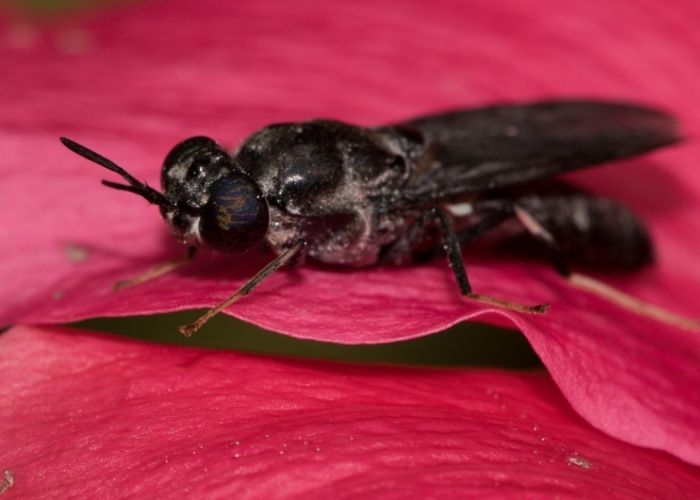The fly species native to Spain known as the ‘black fly’ can pose a health risk to humans as it can transmit diseases through its bite if it is carrying a virus. Climate change and globalisation have led to a significant increase in its population.
Jorge Galván, director-general of the National Association of Environmental Health Agencies (ANECPLA), explained to news site 20minutos that ‘the fly is found all over Spain, it is a native species, but in the regions of Andalucia, Aragon, Catalonia, Madrid, Murcia and Valencia, alarm bells have been sounded due to the large number of black flies.
Causes of the black fly population increase
Galván points out that the black fly, ‘like other insects, has expanded its breeding area. Therefore, it has become more common, as the flies live according to what is in the environment. Moreover, if it is favourable, they develop. So, ‘with rising temperatures, they have appeared in places where they were not before,’ says the expert. This has also led to their biological cycle being accelerated. This means ‘they can reproduce more often in the same time frame. Therefore, they are in more places and reproduce at a faster rate’.
More specifically, the habitat where they usually occur is ‘in flowing watercourses and in fairly clean water’. ‘As rivers have become better maintained, this has led to the development of vegetation that develops in the water, the macrophytes, which provide the perfect habitat for the reproduction of the black fly, as it needs that quality of water and vegetation to reproduce’.
Why these flies are a problem
The problem is that the fly can carry viruses that are transmitted from animals to humans. Galván recalls that two years ago in Andalucia, the West Nile fever virus was transmitted to humans by mosquitoes that had previously sucked blood from an infected organism.
‘When the fly enters the bloodstream to extract blood from the organism to lay eggs, it can transmit viruses at that point’. Galván also points out that the diseases that could be transmitted by these flies ‘could be epidemiological diseases that are not transmitted to other organisms, or it could be, as has been the case with covid-19, that the disease is not only contracted but also transmitted’.
How do you recognise the black fly?
The black fly resembles a common fly, but is slightly ‘smaller, between 1.5 and 5 millimetres, and shaped more like a wasp’. Galván explains that when the fly bites, ‘it injects an anaesthetic which ensures that the person does not notice that it is biting, until after the effect has worn off’. ‘It causes a tear in the skin, a wound, so you should not scratch and apply ice’.
Preventive measures
Galván stated that in order to prevent cases like the hippo fever virus from recurring in Andalucia, prevention is the most important thing, and this must be done by both the government and the individual.
‘It starts with good environmental management of the rivers, looking at the vegetation that is the habitat of this animal. Then monitoring of the larval and adult populations is needed. And subsequently, an action plan must be drawn up, preferably taking action against the larvae,’ explains the expert. This is done with biological insecticide. If there is an adult population, it must be controlled with targeted treatments. Finally, public information is also fundamental, as is routine treatment to prevent the disease from spreading’.
What can you do yourself against the black fly?
- Put on light-coloured clothes, avoid bright colours that can attract swarms.
- Avoid walking along rivers or areas near them, especially early in the morning and late in the afternoon.
- Install mosquito nets on doors and windows in high-risk areas.
- Avoid standing water around the house and keep water tanks covered.
- Check the drains
- Use certified repellents, especially those containing citronella.


